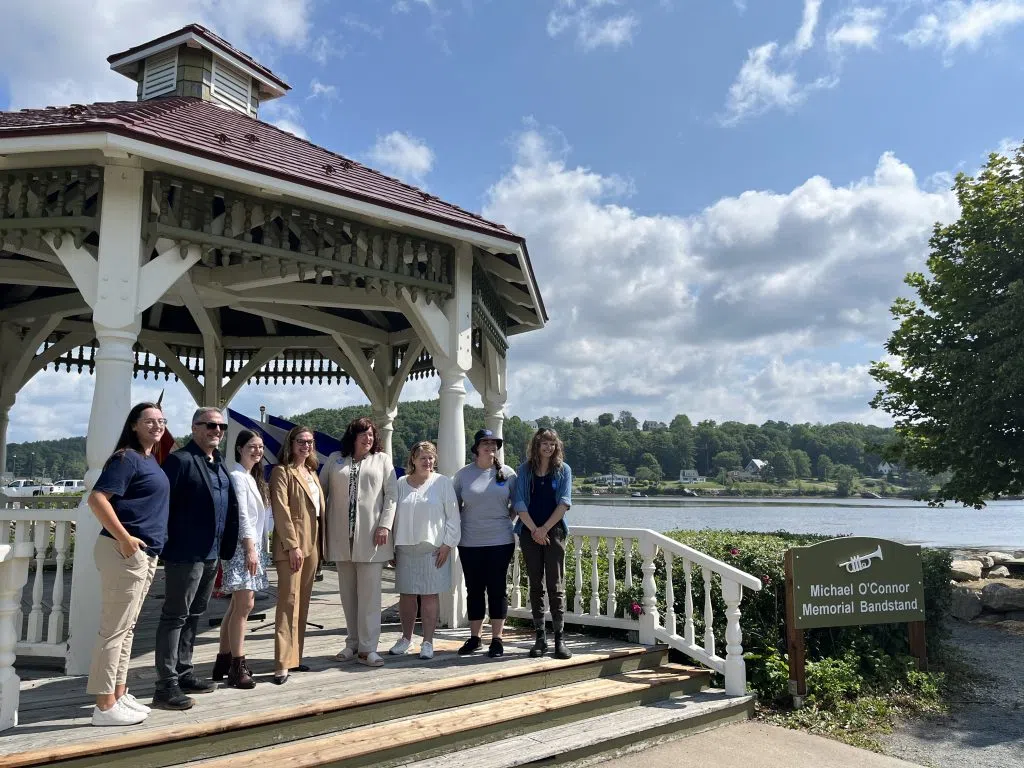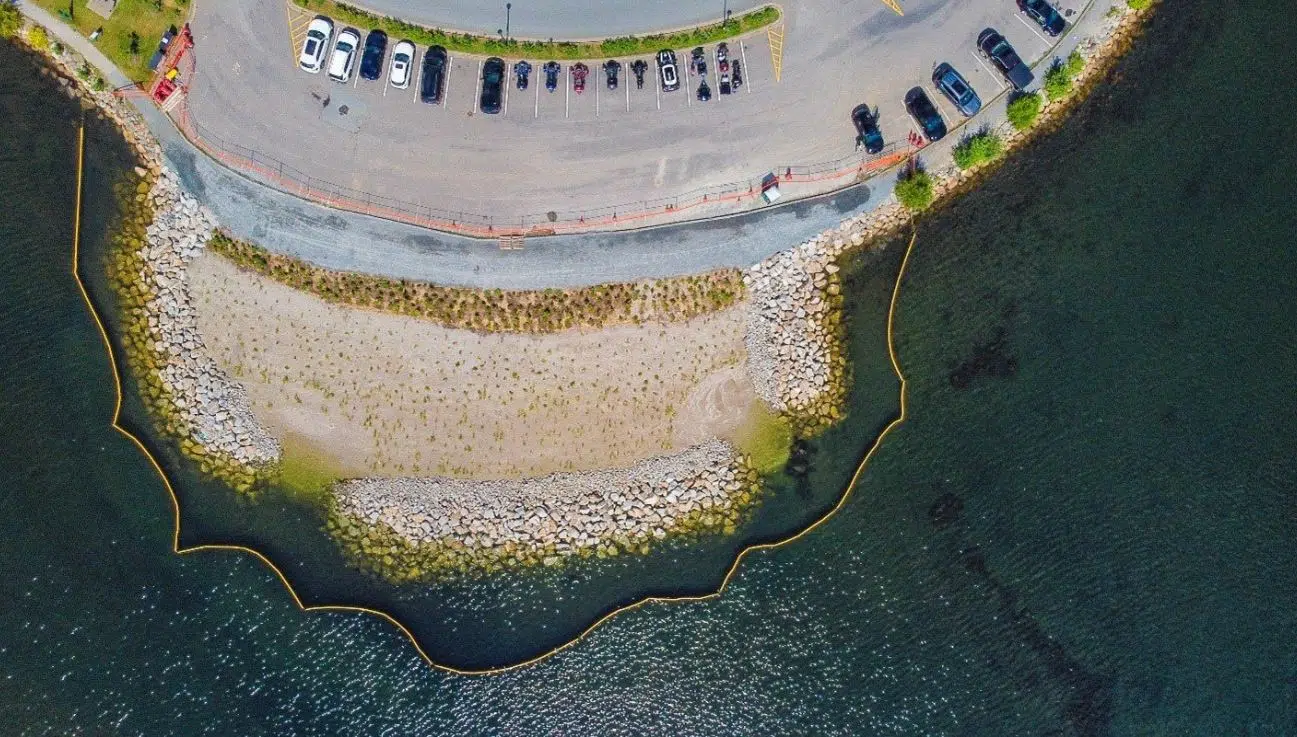A successful climate adaptation project in Mahone Bay is set to grow, with another 100 metres of living shoreline to be installed along Edgewater Street.
The living shoreline — a nature-based approach to reducing coastal erosion and flooding — combines a vegetated bank, tidal wetland, and offshore rock sills. These natural features slow wave energy, filter stormwater, and support fish and plant habitats, while helping protect infrastructure from rising seas and storm surge.
The expansion builds on the success of a 60-metre pilot project launched in 2022. Jordan Veinot, Climate Change Program Manager with Coastal Action, says the pilot section has already shown strong performance during major storms.
“Even during Hurricane Lee, you could come down here and see a clear difference — the protected section looked totally different than the rest of Edgewater Street,” said Veinot. “That’s the kind of benefit we’re building on.”
Coastal Action is leading the initiative in partnership with the Town of Mahone Bay, with nearly $930,000 in new funding from the federal government and $922,100 from Coastal Action. The town is contributing just under $17,000.

Members of Coastal Action and MLA Susan Corkum-Greek, Mahone Bay Mayor Suzanne Lohnes-Croft, South Shore MP Jessica Fancy-Landry at the announcement of the expansion of the living shoreline. Photo: Evan Taylor.
The new installation will continue to use native plants and locally sourced materials. Once construction is complete, the community will be invited to take part in public planting days — a hands-on way for residents and visitors to help shape the shoreline.
“It fosters that sense of connection,” said Veinot. “People come back and check on the plants they helped put in. It builds pride in the project and awareness of what these nature-based solutions can do.”
While the system won’t stop all flooding — especially water coming from rivers or road drainage — it is designed to tackle the most immediate coastal threats.
Construction is expected to begin this fall, with planting of the tidal wetland set for spring. Once complete, the project will span 160 metres and serve as a model for other coastal towns.
Research on the project is being led by St. Mary’s University’s TransCoastal Adaptations Centre, and results are available to the public at mahonebaylivingshoreline.com.










